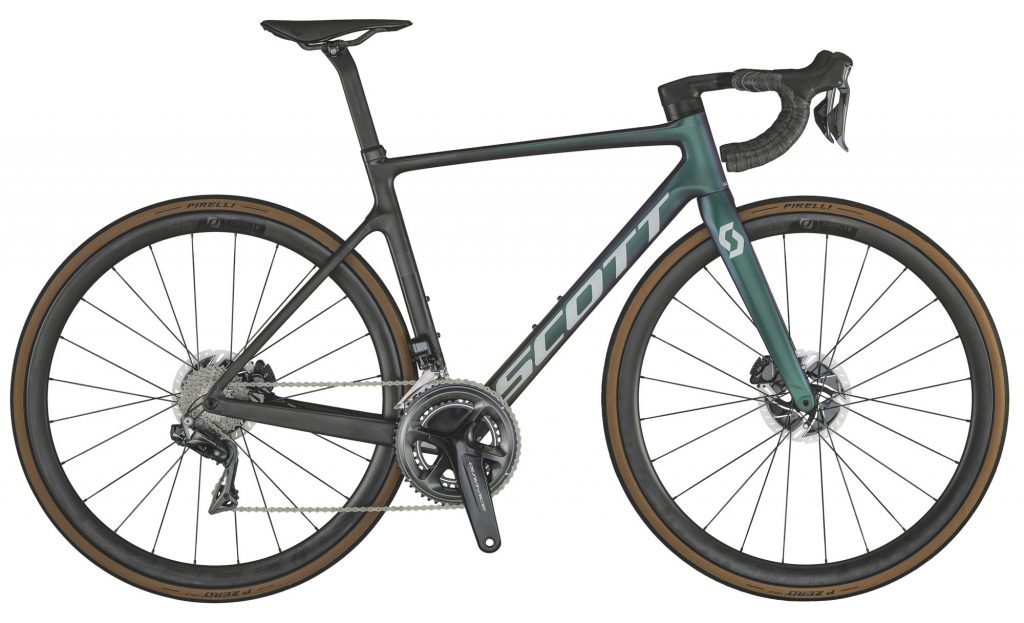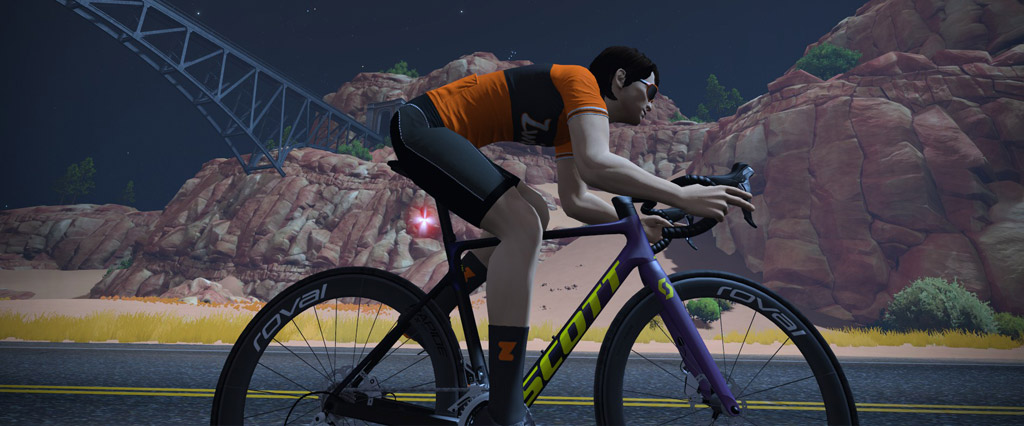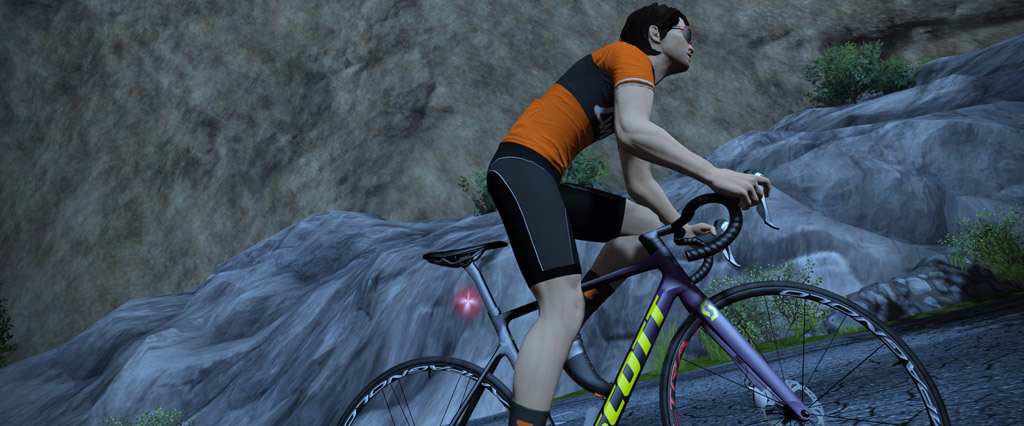Zwift’s newest update includes a new bike frame: the Addict RC from Scott.
Scott already had a handful of frames in game: the Plasma (TT), the Foil (aero racer), and the Spark RC (MTB). The Addict RC adds a mature all-around road racer to the mix, as the Addict RC is lightweight while maintaining strong aero performance.
Here’s how the new Addict RC is described in the Zwift Drop Shop:
“Since its introduction in 2008, the Addict RC has been one of the most successful competitive road bikes on the market. The new Addict RC is as complete as it can get when it comes to the perfect high-performance road bike. Regardless of whether you’re trying to win the biggest races on the planet, chasing a virtual segment, or taking on your riding buddies on your local climb, the Addict RC makes it more likely that you will come out on top.”
The frame is rated 3 stars for aero and 4 for weight on Zwift, indicating that it will be a strong all-arounder. You’ll have to be level 33+ to purchase it in game, at a price of 852,000 Drops.

Over the years, the Addict RC has certainly been used to win plenty of big pro races, including Simon Yates Vuelta a Espana victory in 2018. But IRL performance doesn’t always map directly to Zwift performance, so we ran this frame through our standard tests to learn how it performs in Zwift. And the results were noteworthy!
Here’s everything you need to know about the new Scott Addict RC in Zwift.
Aero Performance

The Addict RC turns in a flat test time just 1 second slower than the new best all-arounder (Pinarello Dogma F) which was released last month, placing it in the 81st percentile in terms of aero performance.
The Addict RC’s flat test time is 51:22.5. By comparison, the fastest frame in game (Cervelo S5 2020) turns in a time of 51:11. (Our test course is two laps of Tempus Fugit, which totals 34.6km.)
Climb Performance

When the road tilts upward, the Scott Addict RC really shines. It turns in an Alpe du Zwift climb time 4 seconds faster than the Pinarello Dogma F, placing it in the 97th percentile for climbing frames in game. It is only bested on the Alpe by the Specialized Aethos!
The Addict RC climbs Alpe du Zwift in a time of 48:55. By comparison, the standard Zwift aero frame turns in a time of 49:31, and the Specialized Aethos completes the test is 48:49.
Note: all test results above are from a 75kg, 183cm rider holding 300W steady using Zwift’s stock 32mm carbon wheelset.
Top All-Arounder
The Pinarello Dogma F was announced as the new top all-arounder when it was released in Zwift last month. But since the Scott Addict RC loses 1 second to the Dogma F on the flats while gaining 4 seconds on the climbs, we’re going to say the Addict RC is the new top all-arounder in game, because it delivers incredible performance where it’s needed most in many races (the climbs).
Tron-Killer?
Astute racers will be asking if the Addict RC will finally unseat the Tron bike from its top all-arounder status. Our answer is: yes, but you have to decide where you want to gain an advantage over the Tron, and this will be determined by your wheelset choice.
Example #1: Throw the new DT Swiss disc on and the Addict is 8.5 seconds faster on the flats, but 4 seconds slower on the climbs compared to the Tron.
Example #2: Use the ENVE 7.8 wheelset and the Addict is 6 seconds slower on the flats, but 9 seconds faster on the climbs.
So where do you want your advantage to be? Your wheelset choice with the Addict RC will determine if it outclimbs the Tron, or outpaces it on flat ground. But no wheelset currently in game will let you do both.
Conclusions
The Scott Addict RC is a super-impressive all-arounder, turning in nearly best-in-game climbing performance while maintaining speed on the flats and descents.
It’s almost like have a Specialized Aethos frame without taking the aero performance hit. And because of that, this frame is the smart choice for any Zwift road race that will have decisive climbs. It will give you a huge advantage on the climbs (when effort is highest), and you shouldn’t feel much of a penalty while sitting in on the flats and descents.
Due to this frame’s incredible aero performance we’ll be updating the following posts soon:
- Best Climbing Frames
- Fastest Frames for Flat/Rolling Races
- Tron Bike vs Top Performers (Scatter Plot)
- Fastest Climbing Frames and Wheels at Each Level
- Fastest Frame and Wheelset for Climbing Alpe du Zwift
Additionally, whenever a new frame is added to the Drop Shop we add it to our Master Zwift Frames List and update the following:
Questions or Comments?
Share below!
Important note: this post contains speed test results for Zwift frames or wheels. These results may change over time, and a bike's performance relative to others may also change. We don't always revise posts when performance rankings change, but we do keep current, master versions of our speed test results which are always available. See the frame charts, wheel charts, and Tron vs Top Performers for current performance data.
